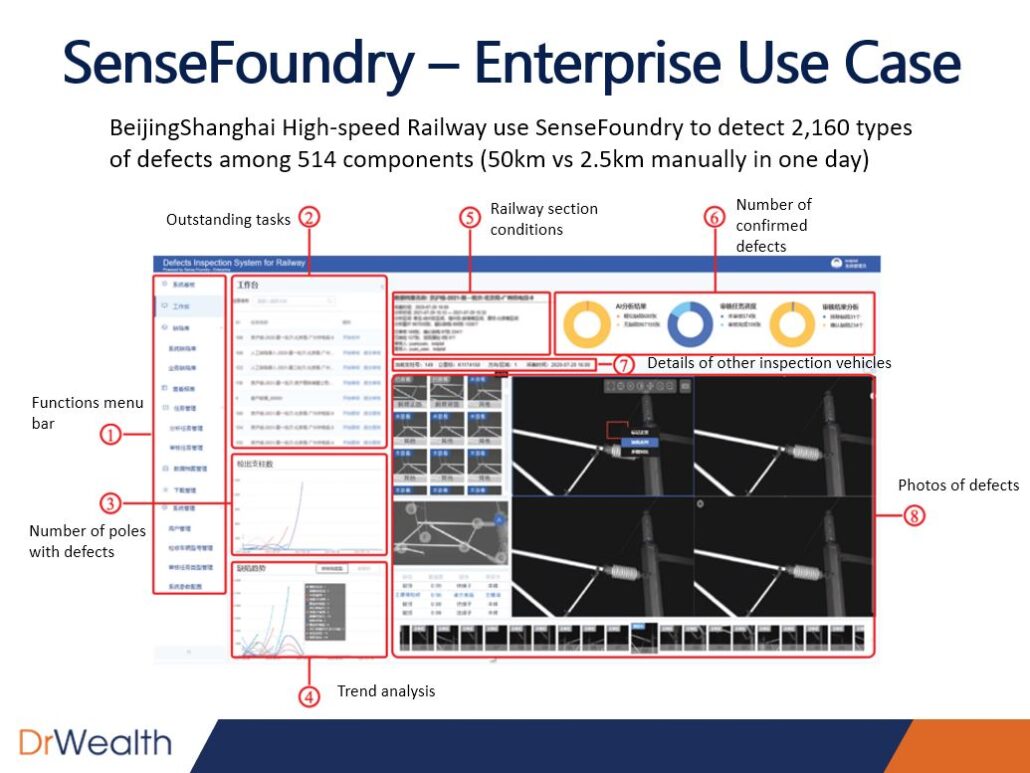It has been a roller coaster ride for many investors of the China stock market. Government crackdowns have caused many of China’s stock prices to drop, even with no fundamental change to the companies.
Regardless of all the unfortunate news, SenseTime decided to proceed with filing for an IPO on the Hong Kong Stock Exchange and they will be starting the IPO tomorrow (7th December). They plan to issue 1.5 billion shares, 10% of which are for local offerings, according to the sales document.
The entry fee approximates $4,030.2 per board lot size of 1,000 shares. The listing is expected to be on next Friday (17th December).
What is SenseTime?
SenseTime is one of China’s four Artificial Intelligence dragons, along with Megvii, Yitu, and CloudWalk. In 2020, they were Asia’s largest AI software company in terms of revenue. According to the company’s prospectus, their software platforms have been used by more than 2,400 customers, half of which are Fortune 500 and publicly-listed companies.
The company is backed by business giants such as Alibaba, Softbank, and Temasek.
SenseTime was founded in 2014 by Professor Tan Xiao’ou and other core members. It primarily focuses on research and development, with the aim to continuously innovate and improve AI capabilities. At present, over two-thirds of its employees are scientists and engineers.
What does SenseTime offer?
The company focuses on Computer Vision and now has the highest market shares among all other Chinese companies. SenseTime is the leading company that helps people achieve a smart lifestyle, whether by having a smart business, living in a smart city, or owning a smart vehicle. Its AI algorithm called SenseCore can be integrated into any product, from enterprise software to smart city solutions, self-driving cars to consumer tech apps.
They are also known for their facial recognition software, DeepID, which is the first to surpass the accuracy of human eyes with a 99.45% recognition rate on the Labeled Faces in the Wild(LWF). The U.S. alleged that this technology was used to identify Uyghurs and other ethnic and religious minorities.

Here are some of the uses of SenseTime technology:
1. SenseFoundry
Smart Business Case
The Beijing Shanghai High-speed Railway uses SenseFoundry to detect 2,160 types of defects among its 514 components. Before, this was done manually and could only cover 2.5km a day. But with the help of SenseFoundry’s sensor, they are now able to cover 50km a day and detect problems in the railway faster.

Smart City Case
In one international metropolis, SenseTime software is able to detect vehicle passengers who are not wearing safety belts with a precision rate of 94%. It is also able to detect people who are using their mobile phones while driving with a precision rate of 86%-96%.
2. SenseME
SenseME software is powered by over 3,500 AI models and enables a broad range of IoT devices to facilitate perception intelligence and content enhancement. An example of this is a mobile phone camera that provides a bokeh effect.

3. SenseMARS Reconstruction
SenseMARS allows its users to create an interface that combines the physical with the digital world. An example of this is a metaverse, shown below:

4. SenseCare
SenseCare is able to provide AI tools for medical diagnosis, treatment planning, and rehabilitation.

5. SenseAuto
SenseAuto was developed to enable smart interactions among vehicles and its surroundings. The company has since launched Robobus which provided L4 autonomous shuttle services for bus companies.

Between 2015 to 2017, SenseTime was ranked second globally in terms of the number of AI publications, behind Microsoft and Carnegie Mellon University (CMU).

Is SenseTime making money?
Unfortunately, SenseTime remains unprofitable.
Since 2014, the company has been constantly focusing on research and thus most of its funds go to R&D and other admin expenses. The company has also been dependent on fundraising over the years.
However, we can see that their R&D efforts have not gone to waste, as their revenue has been steadily increasing. In fact, their revenue rose by 13.9% or 3.45 billion yuan last year.

Is SenseTime growing or slowing down?
We can see the company had a good growth rate in 2019, with an increase of 63% in revenue. This decreased to 14% in 2020, which might be due to the Covid pandemic. However, if their performance continues to be the same as the first half of 2021, we predict that their total year-end revenue would be $3.3 billion yuan. This figure is much lower than last year and is something investors should take note of.

What is the company’s next plans?
With their upcoming IPO, SenseTime plans to continue investing heavily in research and pledges to invest 60% of the amount raised in IPO to enhance the company’s R&D capabilities.
It also plans to allocate 35% of the total amount for algorithm mass production and infrastructure and 25% to other technologies.
On top of that, they have plans to integrate their research with real-world applications to help companies increase their profits.
Will I invest in SenseTime once it has IPO?
At this point, I’m not sure if I will invest in SenseTime as I lack publicly available data to do a proper analysis. However, I do see the company’s potential and would definitely want to review this company again in the future. If you want to know more details, Alvin shared his videos at the previous I3 mentorship session:

